Azure Synapse vs. Databricks: A Comprehensive Examination of Leading Data Platforms
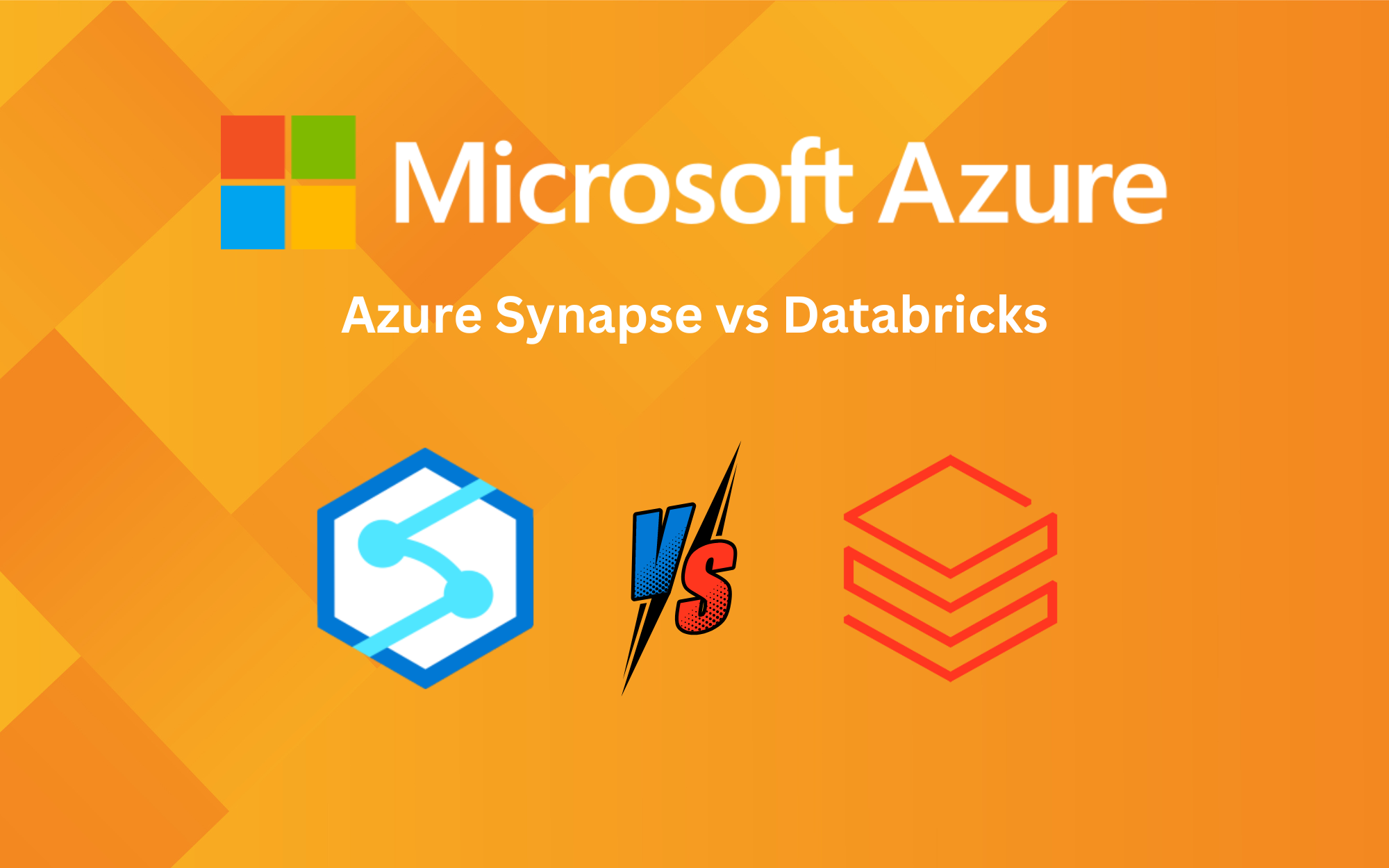
In our data-driven world, where information is expanding at an unprecedented rate, the demand for robust and dynamic data platforms has never been higher. Businesses are on a quest to unify scattered data, perform multifaceted operations, and derive actionable insights to guide strategic decisions.
Within the data platform landscape, Azure Synapse and Databricks emerge as two prominent technologies. Both have proven their worth in reliability and efficiency. Yet, the choice between Synapse and Databricks requires a careful examination of an organization's specific data management requirements.
Comparing these two platforms reveals distinct characteristics. They both excel in enterprise data warehousing, machine learning, and ETL pipelines. A closer look at their features and capabilities will help determine the best fit for your organization.

What is Databricks?
Databricks Machine Learning's lakehouse serves as a foundational, data-native, and collaborative solution, encompassing all facets of machine learning, data, analytics, and AI. Developed by the creators of Apache Spark, Databricks is a versatile web-based tool suitable for diverse data applications. It enables interactive visualizations, text, and code, with smooth connections to tools like Tableau, Power BI, QlikView, and more.
With seamless integration across major platforms like Microsoft Azure, AWS, and GCP, Databricks simplifies data management for organizations dealing with vast data volumes. As a cloud-based tool, it facilitates data exploration through machine learning models, utilizing data engineering tools to process and transform extensive data sets.
Built atop distributed cloud computing technologies, Databricks is faster, more secure, scalable, and resilient. Its built-in visualization options are versatile, and its Lakehouse architecture simplifies Big Data analytics. By fully leveraging this architecture, it unifies data sources and minimizes unnecessary data components.
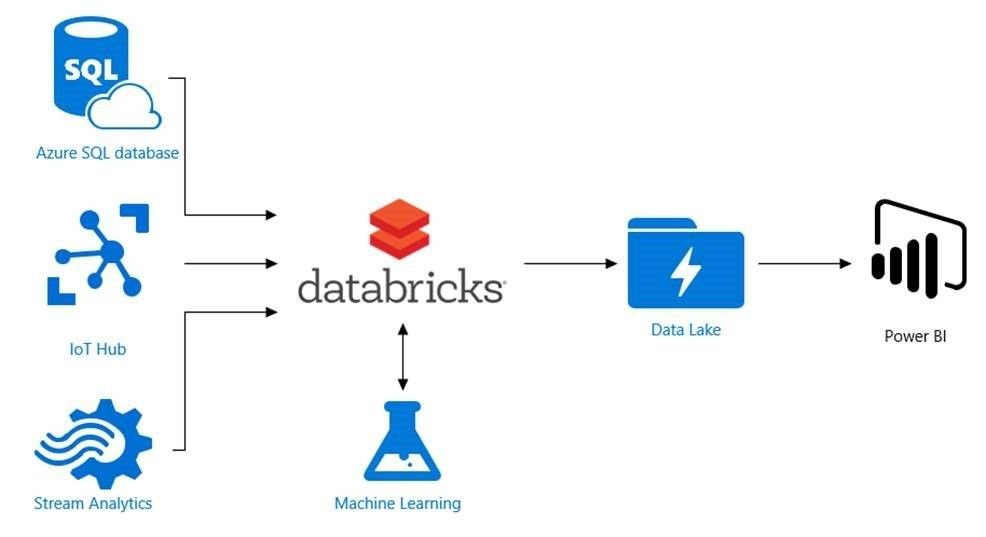
Databricks Features:
- Integration with various data sources, development tools, partner solutions
- Unification of data warehousing and AI on a single platform
- Reliable data platform across different cloud systems
- Streamlined data capture and management
- In-depth insights into the data pool
- Enhanced machine learning and team productivity
- Comprehensive machine learning environment
- Intuitive interface for multi-cloud Lakehouse creation
- Advanced machine learning capabilities like managed MLflow, AutoML, and REST API for deployed models (as highlighted by industry experts)
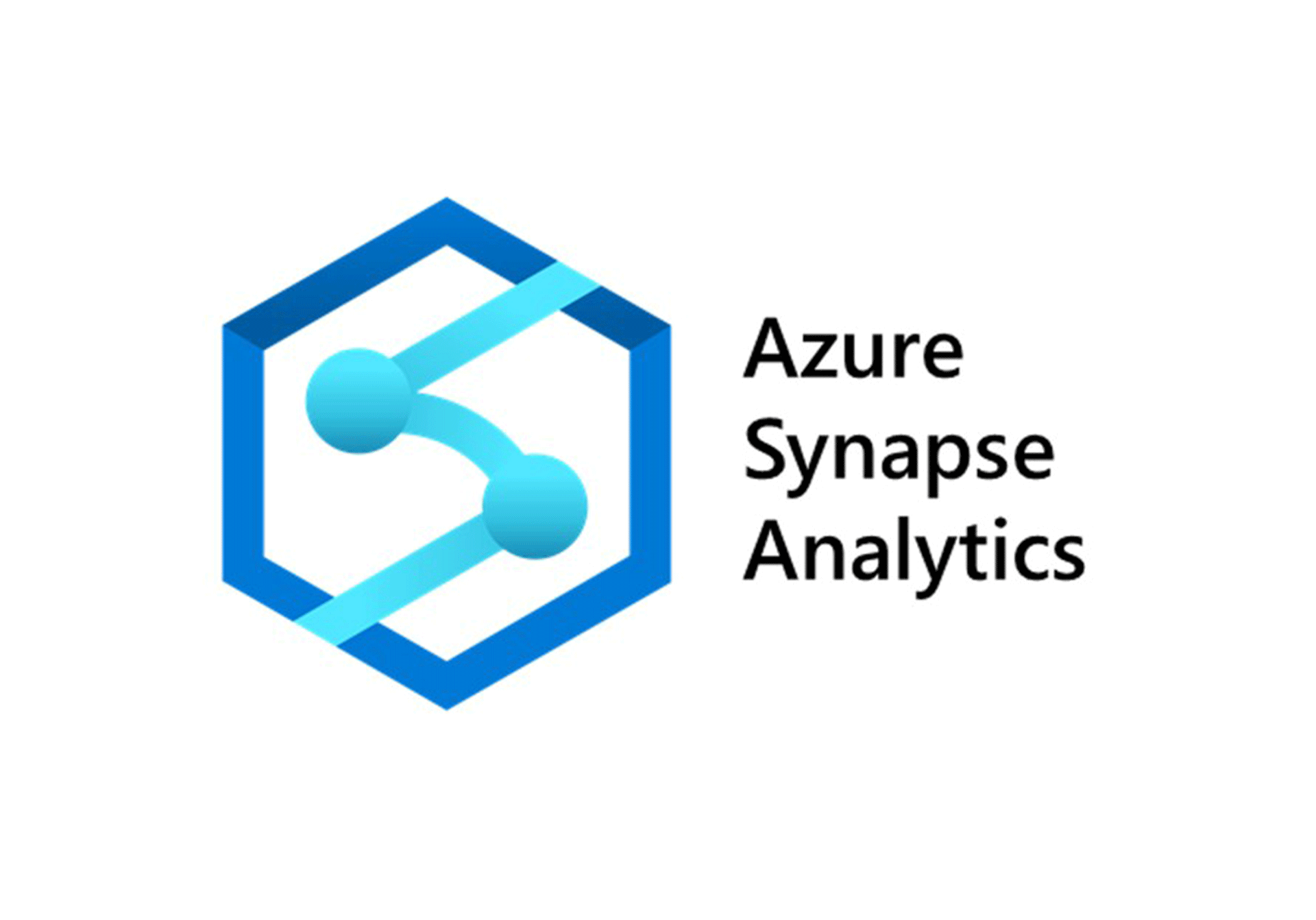
What is Synapse?
Azure Synapse Analytics is a limitless analytics service, blending data integration, enterprise data warehousing, and big data analytics. As the evolved form of Azure SQL Data Warehouse, it merges big data analytics, data warehousing, data lakes, and data integration into a unified platform.
Examining Synapse reveals its ability to fetch both relational and non-relational data at petabyte scale. It offers T-SQL-based analytics, utilizing serverless and dedicated SQL pools for analytical information extraction and data storage. The SQL server group provides the infrastructure for vast data warehouses, while the serverless model facilitates ad hoc data lake queries and logical data warehouse creation.
Synapse ensures a customized user experience, implementing robust compliance and governance procedures for secure customer information. It enables users to glean profound insights from various data streams, including big data systems and diverse programming languages.

Azure Synapse features:
- Efficient pipeline development and ETL/ELT processes
- Unified workspace for big data analytics, data integration, and enterprise data warehousing
- Seamless integration through Apache Spark, SQL engine, and languages like Python, .NET, etc.
- Real-time security for sensitive data with row- and column-based protection
- Cloud data service for both structured and unstructured data
- Exploration of relational and non-relational data using SQL
- Language compatibility with efficient information storage
- Agile data engine with optimized query capabilities
- Full integration with Power BI for a more traditional relational experience (a key differentiator as per industry insights)
Azure Synapse vs. Databricks: Top Competitors
Azure Synapse competitors include:
- Databricks Lakehouse Platform: A unified data analytics platform designed for collaboration and integrated with the latest data and ML frameworks.
- Google Cloud BigQuery: A fully-managed, serverless data warehouse that enables super-fast SQL queries using the processing power of Google's infrastructure.
- Snowflake: A cloud-based data warehousing platform that allows many users to access and compute data simultaneously.
- Amazon RedShift: A fully managed, petabyte-scale data warehouse service in the cloud.
- Cloudera: Offers a hybrid, open-source data platform for machine learning and analytics.
- Dremia: A SQL Lakehouse platform that simplifies data queries.
- IBM DB2: A family of data management products, including database servers, developed by IBM.
- RStudio: An integrated development environment for R, a programming language for statistical computing and graphics.
- MongoDB: A cross-platform document-oriented database program.
- Teradata: A provider of database and analytics-related software, products, and services.
- SAP HANA: An in-memory, column-oriented, relational database management system.
Databricks Competitors include:
- Azure Synapse Analytics: An analytics service that brings together big data and data warehouse management.
- Qubole: A cloud-native, big data platform that self-manages and self-optimizes.
- Google Cloud BigQuery: Similar to Azure Synapse, a serverless and highly scalable data warehouse.
- Snowflake: Offers a cloud-based data warehousing platform.
- Amazon Redshift: Competes directly with both Azure Synapse and Databricks in the data warehousing space.
- Teradata Vantage: A powerful, modern cloud platform for analytics.
- RStudio: Offers tools for both data science and data analytics.
- IBM DB2: Similar to Azure Synapse, offers a suite of data management products.
- Cloudera: Provides a platform for machine learning and analytics, optimized for the cloud.
- AWS: Offers a broad array of data management and analytics services.
- Dremio: Known for simplifying and accelerating data analytics.
Databricks vs. Azure Synapse: Pros and Cons
Databricks Benefits:
- Streamlined data storage and accelerated ETL processes
- Unified environment that encourages collaboration
- Unmatched support for popular tools and organizations
- Robust security features for crafting top-tier analytical solutions
- Simplified data exploration, prototyping, and application development
- Empowers teams to deploy performance-driven Spark clusters autonomously
- Advanced machine learning capabilities for real-time scenarios (a unique advantage)
Databricks Cons:
- Requires building and releasing code packages via CI/CD
- Necessitates software engineering skills
- Code must remain in Notebooks, which may not be user-friendly
Benefits of Azure Synapse:
- Compatibility with languages like Python, Scala, Java, SQL, R, etc.
- Tailored user experience with efficient data storage
- Robust data security and fraud detection mechanisms
- Swift and effective insight delivery from all data sources
- Comprehensive analytical solutions with reduced development time
- Utilization of MPP database technology for workload and large data management
- Integration with existing Microsoft or Azure services (an aspect that may influence the choice for some organizations)
Azure Synapse Disadvantages:
- Task planning capabilities may be challenging
- Potential delays in updates, new features, and Spark integration
- Seamless third-party integration may be complex
Azure Synapse vs. Databricks: Key Components
Components of Databricks:
- Databricks SQL analytics
- Databricks Workspace
- Databricks Machine Learning
- Data management in Databricks SQL
- Clusters, notebooks, libraries, workspace, tasks
- Delta Lake
- Delta engine
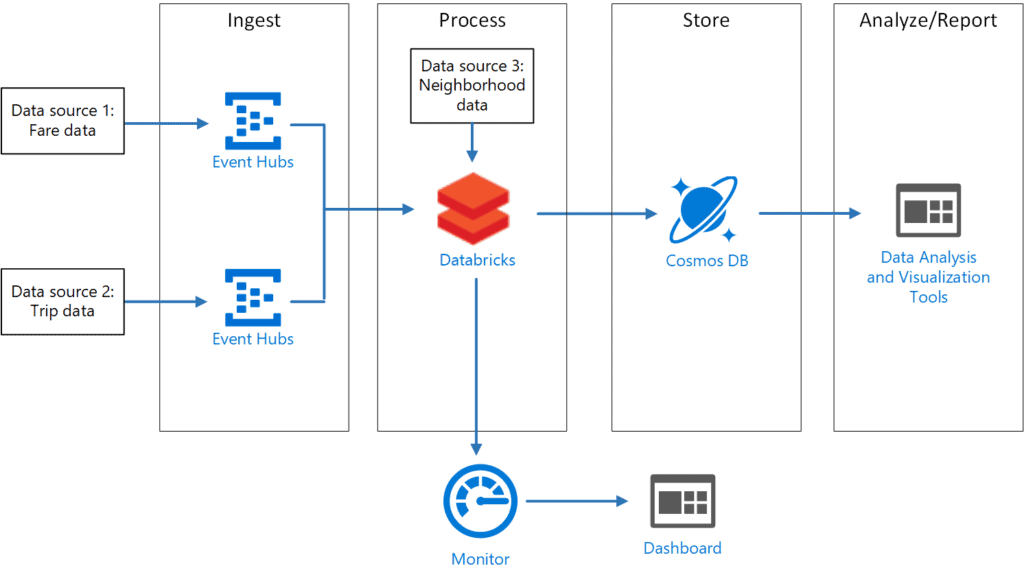
Components of Synapse:
- Synapse SQL
- Furnished pool
- Pole on request
- Open-Source Spark and Delta
- Synapse Pipelines
- Studio
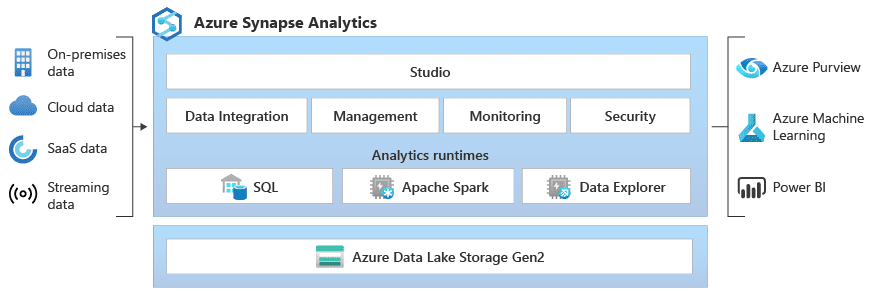
Databricks vs Synapse: The Similarities
- Renowned data platforms
- Deliver the speed, volume, and quality required by BI and analytics solutions
- Facilitate data management and analysis
- Enable ad-hoc data lake discovery
- Inherent support for machine learning workflows
Azure Synapse vs Databricks: A One-to-One Comparison
| Parameters | Synapse | Databricks |
|---|---|---|
| Overview | A comprehensive tool for data warehousing and analytics, with open-source Apache Spark and .NET support | A holistic platform for data storage, analysis, and visualization, with cloud-based integration |
| Architecture | Unified platform integrating data storage, processing, and visualization | Utilizes data Lakehouse in a cohesive cloud-based platform with cloud storage connectivity |
| Ease of use | User-friendly for organizations familiar with SQL and Azure | Facilitates data storage, cleansing, and visualization through a single platform, from basic ETL to complex BI |
| General competencies | Spark Engine, SQL Engine, data warehouse, interface tool | Notebook, Dashboard, Databricks SQL, Machine Learning, Data Science |
| Support for Apache Spark | Open-source Apache Spark with .NET support | Fully managed Spark clusters built on Apache Spark |
| Notebooks | Supports notebooks but lacks automated versioning; Nteract Notebook supported | Supports notebooks with automated version control; Databricks Notebook supported with real-time collaboration |
| Experience with developers | Accessible via Azure Synapse Studio | Accessible via Databricks Connect and UI |
| Supported languages | SQL, Python, Scala, etc. | Python, R, SQL, etc. |
| Experience with Power BI | Accessible from Azure Synapse Studio | Full traditional BI experience access |
| Data warehousing and SQL Analytics | Comprehensive SQL features with cutting-edge technologies | Delta lake-based data warehouse with limited full BI experience |
| Utilize Delta | Open-source Delta Lake | Optimized Databricks Delta |
| Data Security | Comprehensive security features including access control, network security, authentication, SQL injection protection | Role-based access management, automated encryption, and other vital security features |
Synapse vs Databricks: When to Use What?
Choosing between Databricks and Synapse becomes clearer with a detailed comparison:
Use Synapse When:
- SQL data analysis, big data analysis, and data warehousing are required
- Interactive, self-service reports are needed through BI tools, as Power BI is directly accessible from Synapse Studio
- SQL and BI development are preferred
- Quick implementation of a robust data warehouse and analysis tool is desired without manual installation
- Integration with existing Microsoft or Azure services is a priority (a consideration that may guide the choice)
Use Databricks When:
- AI, real-time machine learning application development, and data science workloads are needed, as it offers an excellent developer experience
- Data scientists prefer coding in languages like Python or R within Notebooks
- A technical audience requires a broader-reaching data platform with superior competencies
- Focus on data lake and data processing with Apache Spark familiarity is essential
- Advanced machine learning capabilities are critical for the organization's operations (a unique advantage)
The Final Note: Azure Synapse Analytics vs. Databricks
When assessing Databricks vs. Azure Synapse, the overall perspective must guide the selection of the right tool for the right task. Both have successfully executed complex projects across various organizations.
Thus, the final decision between Databricks and Synapse rests with the organization, considering factors such as workload, data volume, usage pattern, data strategies, resources, timelines, costs, programming language, platform, open-source tool investment, and more. The choice may also be influenced by specific use cases, such as advanced machine learning needs or integration with existing technologies, as highlighted by industry insights.
If you want to know more about Microsoft Azure feel free to contact me:
Contact me via,
Mail: tycho.loke@peoplerock.nl
Phone: +31 6 39 41 36 65
LinkedIn: Tycho Löke

